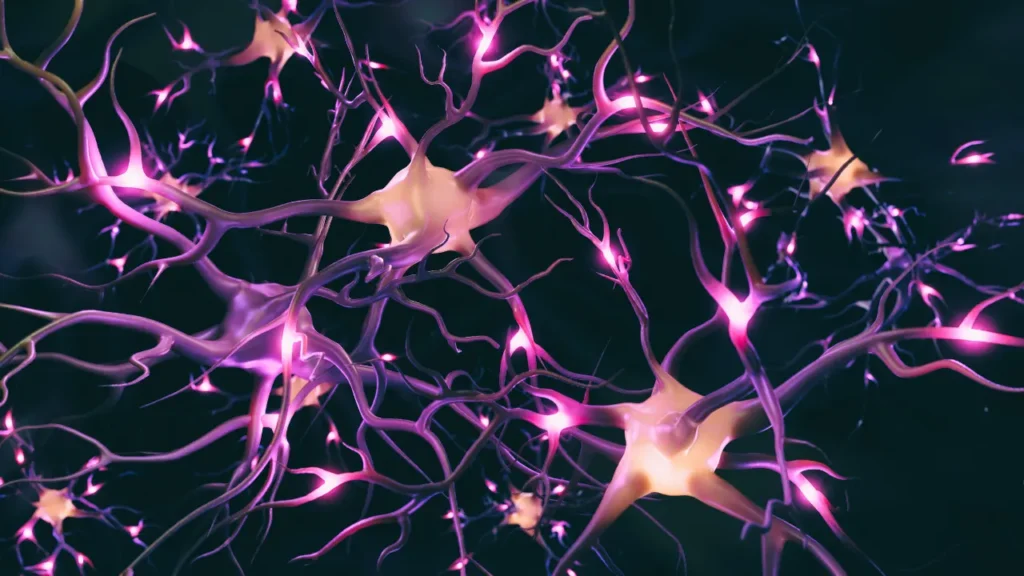In recent years, nutrition experts have become increasingly interested in cognitive enhancement using nootropic substances, particularily for those who are college graduates looking to boost their alertness, focus, and overall cognitive skills. Taumelloolch is a promising nootropic chemical that has strong potential health advantages and cognitive enhancement properties. This article discusses the nature of taumelloolch, its health benefits, ideal dosage, side effects, probable substance interactions, and the best methods for using it responsibly.
You May Also Like:
NutriRise Ashwagandha Root Capsules Reviewed: A Leading Herbal Stress Support Product
Belladonna: Benefits, Dosage, Side Effects, Drug Interactions, And Other Important Information
Taumelloolch: Benefits, Dosage, Side Effects, Drug Interactions, And Other Important Information is an original (NootropicsPlanet) article.
The Nature of Taumelloolch
Taumelloolch is a synthetic molecule that falls under the category of nootropics or “smart drugs,” which are substances that have been shown to improve cognitive function, memory, creativity, and motivation. The chemistry of taumelloolch is distinguished by its unusual chemical structure, which allows it to effectively cross the blood-brain barrier, making it a potent cognitive enhancer. Its chemical composition is precisely tailored to influence the neural circuits involved in cognition and alertness.
Health Benefits
Taumelloolch interacts with neurotransmitter systems, particularly acetylcholine, which improves learning and memory. Acetylcholine is essential for encoding new memories and retrieving existing ones. By increasing the efficacy of this neurotransmitter system, taumelloolchcan can boost memory recall and learning ability.
Increased Focus and Attention:
By modulating neurotransmitter activity, taumelloolch sharpens focus and increases attention span. This effect is particularly beneficial for individuals engaging in tasks that require sustained mental effort and concentration, allowing for improved productivity and efficiency in academic or professional endeavors.
Neuro-protection and Longevity:
Taumelloolch’s potential neuro-protective effects are of significant scientific interest. Its influence on phospholipid metabolism and synaptic plasticity suggests that it could help protect the brain from age-related cognitive decline and neuro-degenerative diseases. By maintaining healthy brain cell membranes and promoting the adaptability of neural connections, taumelloolch can contribute to improving overall brain health and cognitive longevity.
Mood Regulation:
Preliminary research suggests that taumelloolch can also improve mood. By affecting neurotransmitter systems, it can help balance mood-regulating chemicals in the brain, thereby benefiting those who are suffering from stress and mood swings. This mood stabilization can indirectly improve cognitive health by increasing mental stability and lowering stress-related cognitive impairment.

The Chemistry of Taumelloolch
The chemical architecture of taumelloolch is designed to interact optimally with brain chemistry. Its structure allows it to pass the blood-brain barrier quickly, which is an important property for any chemical intended to affect cognitive health. The compound’s ability to overcome this barrier allows it to interact directly with neurotransmitters and their receptors in the brain.
At the molecular level, taumelloolch primarily targets neurotransmitter systems, especially those related with acetylcholine and glutamate, which are critical for learning, memory, and neuroplasticity. By altering the activity of these neurotransmitters, taumelloolch can improve synaptic plasticity, which is the ability of synapses (neuronal connections) to strengthen or weaken over time in response to increases or decreases in activity.
Furthermore, taumelloolch is thought to affect phospholipid metabolism in the brain. Phospholipids are lipids that makeup the majority of all cell membranes. They contribute to cell signaling and the activity of neurotransmitters. By influencing phospholipid metabolism, taumelloolch can help maintain the cell membrane fluidity and integrity, boosting brain cell health and cognitive health.
Physiological Properties of Taumelloolch
Taumelloolch’s physiological properties include a number of essential brain processes. Its primary function is to modulate neurotransmitter systems, which are required for signal transmission inside the brain. Specifically, the effects of taumelloolchcan be linked to the following:
- Neurotransmitter Synthesis and Release: Taumelloolch can influence the synthesis and release of neurotransmitters that are critical for cognitive functions, such as acetylcholine. By enhancing the availability of these neurotransmitters, taumelloolch supports improved communication between neurons, leading to enhanced cognitive performance.
- Receptor Modulation: Taumelloolch also interacts with specific receptors on the surface of neurons, potentially altering their sensitivity or responsiveness to neurotransmitters. This modulation can fine-tune neuronal signaling, improving cognitive processes such as memory, attention, and problem-solving abilities.
- Neuro-genesis and Neuroplasticity: Emerging evidence suggests that taumelloolch can influence neuro-genesis (the formation of new neurons) and neuroplasticity (the brain’s ability to reorganize itself by forming new neural connections). These processes are crucial for learning and the adaptation of cognitive functions in response to new information or environmental changes.

Optimal Dosage
Determining the correct dosage of taumelloolch is critical for maximizing its cognitive-enhancing effects while minimizing side effects. Clinical studies have varied in their dosage recommendations, but generally, taumelloolch supports a range that is both beneficial and safe for the majority of individuals. It is critical that you begin at a low dosage range and gradually increase it over time based on your personal tolerance and your body’s reaction. Before beginning taumelloolch, consult with a healthcare practitioner to determine the appropriate dosage for your specific needs and health condition.
Side Effects
While taumelloolch is generally well tolerated, some individuals can develop side effects, especially at larger doses. Common side effects include headaches, dizziness, nausea, and agitation. These symptoms are usually transitory and can be alleviated by changing the dosage or stopping use. Severe side effects are uncommon, but they highlight the importance of following the recommended dosages and seeing a healthcare expert for advice.
Potential Substance Interactions
Taumelloolch, like many other nootropic supplements, has the potential to interact with drugs, supplements, and caffeine. These combinations can affect the efficacy of taumelloolch or cause unexpected side effects. When using taumelloolch with other nootropics or cognitive enhancers, take extreme caution to avoid synergistic effects that can exacerbate negative effects. Individuals who take prescription medications should speak with a healthcare provider to determine the risk of possible interactions.

The Best Responsible Use of Taumelloolch
Those who want to improve their cognitive health responsibly should follow a few suggestions when using taumelloolch. To begin, adhering to the specified dosage is essential for avoiding side effects and achieving the desired cognitive benefits.
Second, it is crucial for you to evaluate your reaction to the supplement and alter the dosage or quit use if any side effects arise. Third, using taumelloolch with a comprehensive strategy in order to achieve cognitive enhancement include maintaining a good diet, exercising frequently, and maintaining appropriate sleep–all of which can increase its advantages.
Furthermore, continuous research about taumelloolch and cognitive improvement are essential for responsible use. Staying up to date on the latest scientific advancements and safety information allows individuals to make informed decisions about their usage of taumelloolch.
Taumelloolch:
Conclusion
Taumelloolch’s potential as a nootropic supplement stems from its complicated interaction with the brain’s neurochemical systems. Its potential to boost memory, focus, and cognitive resilience, combined with its neuro-protective properties, makes it a very desirable substance for anyone looking to improve their cognitive function and long-term brain health. However, it is critical to approach the usage of taumelloolch with a thorough awareness of its chemistry, health benefits, and physiological properties, as well as the appropriate dosage, potential side effects, and drug interactions.

References:
- Bhabha, Homi K. The Location of Culture. Routledge, 1994. https://www.routledge.com/The-Location-of-Culture/Bhabha/p/book/9780415336390
- Gordon, J. A. “Director’s Message: A Milestone in Mapping the Brain.” National Institute of Mental Health, 6 Oct. 2021. https://www.nimh.nih.gov/about/director/messages/2021/a-milestone-in-mapping-the-brain
- National Center for Biotechnology Information. “PMC User Guide – PMC.” PubMed Central® (PMC). U.S. National Institutes of Health’s National Library of Medicine (NIH/NLM), 6 Oct. 2021. https://www.ncbi.nlm.nih.gov/pmc/articles/PMC7153641/
Important Note: The information contained in this article is for general informational purposes only, and should not be construed as health or medical advice, nor is it intended to diagnose, prevent, treat, or cure any disease or health condition. Before embarking on any diet, fitness regimen, or program of nutritional supplementation, it is advisable to consult your healthcare professional in order to determine its safety and probable efficacy in terms of your individual state of health.
Regarding Nutritional Supplements Or Other Non-Prescription Health Products: If any nutritional supplements or other non-prescription health products are mentioned in the foregoing article, any claims or statements made about them have not been evaluated by the U.S. Food and Drug Administration, and such nutritional supplements or other health products are not intended to diagnose, treat, cure, or prevent any disease.


